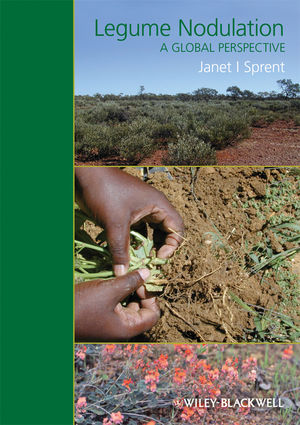Legume Nodulation: A Global PerspectiveISBN: 978-1-4051-8175-4
Hardcover
200 pages
July 2009, Wiley-Blackwell
 |
||||||
1.1 Caesalpinioideae
1.2 Mimosoideae
1.2.1 Acacieae
1.2.2 Ingeae
1.2.3 Mimoseae
1.3 Papilionoideae
1.3.1 Non-nodulation in the Papilionoideae
1.3.2 Nodulating papilionoids with primitive nodule structure
1.3.3 Tribes with the 50kb inversion
1.3.4 The Dalbergioid clade
1.3.5 The Mirbelioid clade
1.3.6 The Millettioid clade
1.3.7 The Robinioid clade
1.3.8 The Inverted Repeat Lacking Clade (IRLC)
2. Global Distribution of Legumes
2.1 Deserts
2.2 Savannas
2.2.1 African savannas
2.2.2 Neotropical savannas
2.2.3 Australian savannas
2.3 Seasonally dry tropical forests (succulent biome)
2.3.1 Caatinga
2.3.2 Other areas
2.4 Rainforests
2.4.1 Atlantic forest
2.4.2 Temperate rainforests
2.4.3 Tropiucal rainforrests
2.5 Temperate regions
2.5.1 Mediterraqnean ecosystems
2.5.2 Temperate, boreal and high altitude legumes
2.6 Invasive legumes
3. Evolution of Nodulation
3.1 When did nodulation first occur?
3.2 Where did nodulation first occur? Where are nodulated legumes going?
3.2.1 Madagascar as a special case
3.2.2 Recent evolution
3.3 How was the information for nodulation acquired?
3.3.1 Ancient genes that have been recruited for symbiotic purposes
3.3.2 Gene duplication
3.4 Why was nodulation necessary?
3.5 Model legumes
4. Bacteria Nodulating Legumes
4.1 α-Proteobacteria
4.4.1 Rhizobium
4.1.2 Sinorhizobium and Ensifer
4.1.3 Other members of Rhizobiaceae
4.1.4 Bradyrhizobium
4.1.5 Azorhizobium and Devosia
4.1.6 Methylobacterium
4.1.7 Ochrobactrum
4.1.8 Mesorhizobium
4.1.9 Phyllobacterium
4.2 β-Proteobacteria
4.3 Other bacterial nodule occupants
4.4 Specificity
4.5 Competition
4.6 Stability and genetic exchange
5. Development and Functioning of Nodules
5.1 Root hair infection
5.2 The role of hormones
5.3 Autoregulation
5.4 Formation of symbiosomes
Bacteroid size and shape
The role of polyβhydroxybutyrate (PHB)
5.5 Nodules lacking root hair infection
5.5.1 Dalbergioid legumes
5.5.2 Genisteae and Crotalarieae
5.5.3 The special case of Sesbania
5.6 Other variations on nodule structure
5.7 Functioning nodules. The critical role of oxygen
5.8 Nitrogen fixation and export of products
5.8.1 The hydrogen enigma
5.9 Nodule effectiveness
5.10 The bacteria within the nodules- control by the bacteria, plant or both?
5.11 Constraints on nitrogen fixation in agriculture and the environment
5.11.1 Waterlogging drought and salinity
5.11.2 Temperature
5.11.3 Edaphic factors
5.12. Legumes, pests and pathogens
6. Some Legumes for the Future?
6.1 Human food
6.1.1 Vigna spp
6.1.2 Other phaseoloid legumes
6.2 Forage legumes
6.3 Pharmaceutical uses
6.4 Other uses



